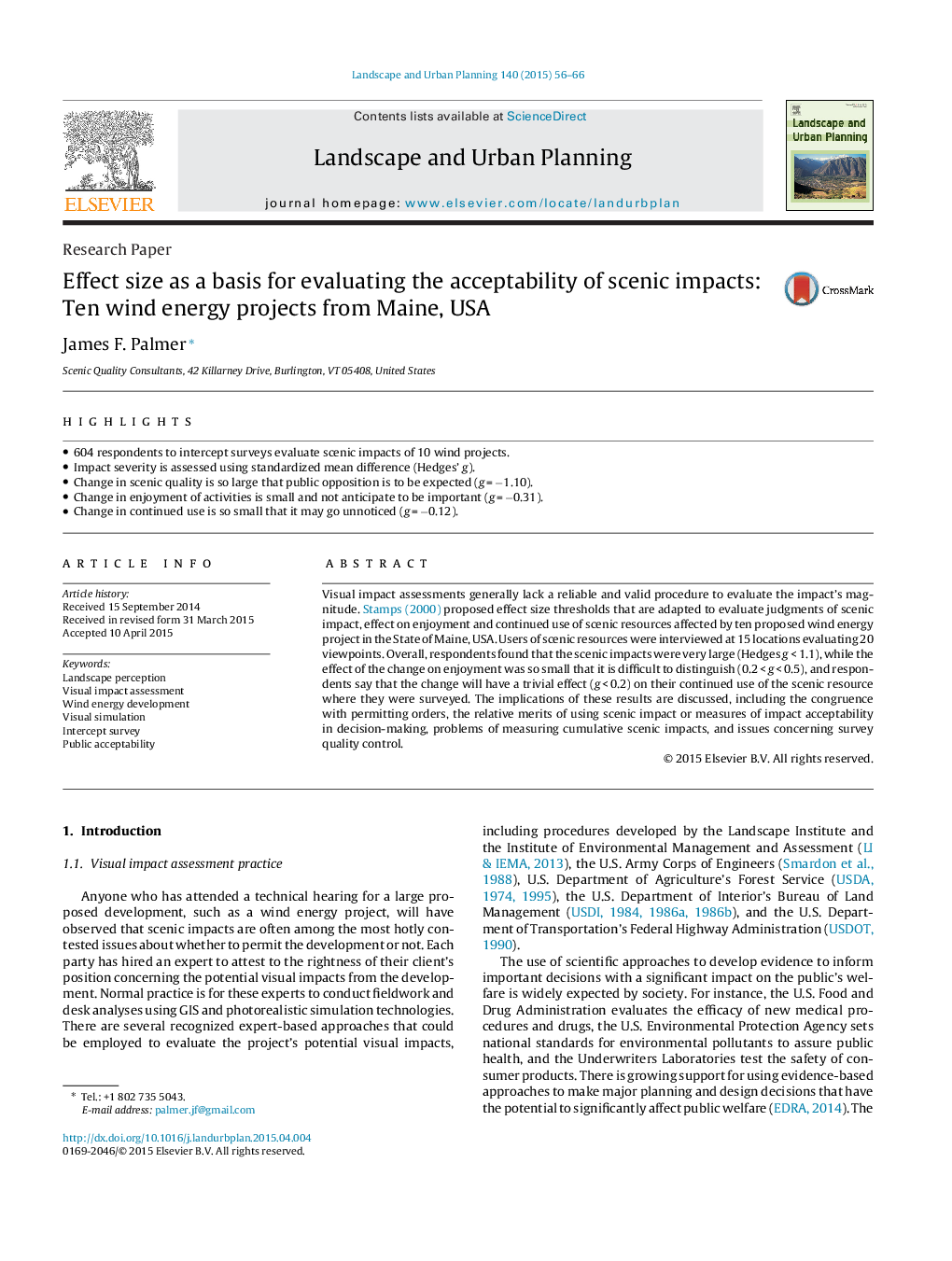| Article ID | Journal | Published Year | Pages | File Type |
|---|---|---|---|---|
| 7461140 | Landscape and Urban Planning | 2015 | 11 Pages |
Abstract
Visual impact assessments generally lack a reliable and valid procedure to evaluate the impact's magnitude. Stamps (2000) proposed effect size thresholds that are adapted to evaluate judgments of scenic impact, effect on enjoyment and continued use of scenic resources affected by ten proposed wind energy project in the State of Maine, USA. Users of scenic resources were interviewed at 15 locations evaluating 20 viewpoints. Overall, respondents found that the scenic impacts were very large (Hedges g < 1.1), while the effect of the change on enjoyment was so small that it is difficult to distinguish (0.2 < g < 0.5), and respondents say that the change will have a trivial effect (g < 0.2) on their continued use of the scenic resource where they were surveyed. The implications of these results are discussed, including the congruence with permitting orders, the relative merits of using scenic impact or measures of impact acceptability in decision-making, problems of measuring cumulative scenic impacts, and issues concerning survey quality control.
Keywords
Related Topics
Life Sciences
Agricultural and Biological Sciences
Ecology, Evolution, Behavior and Systematics
Authors
James F. Palmer,
